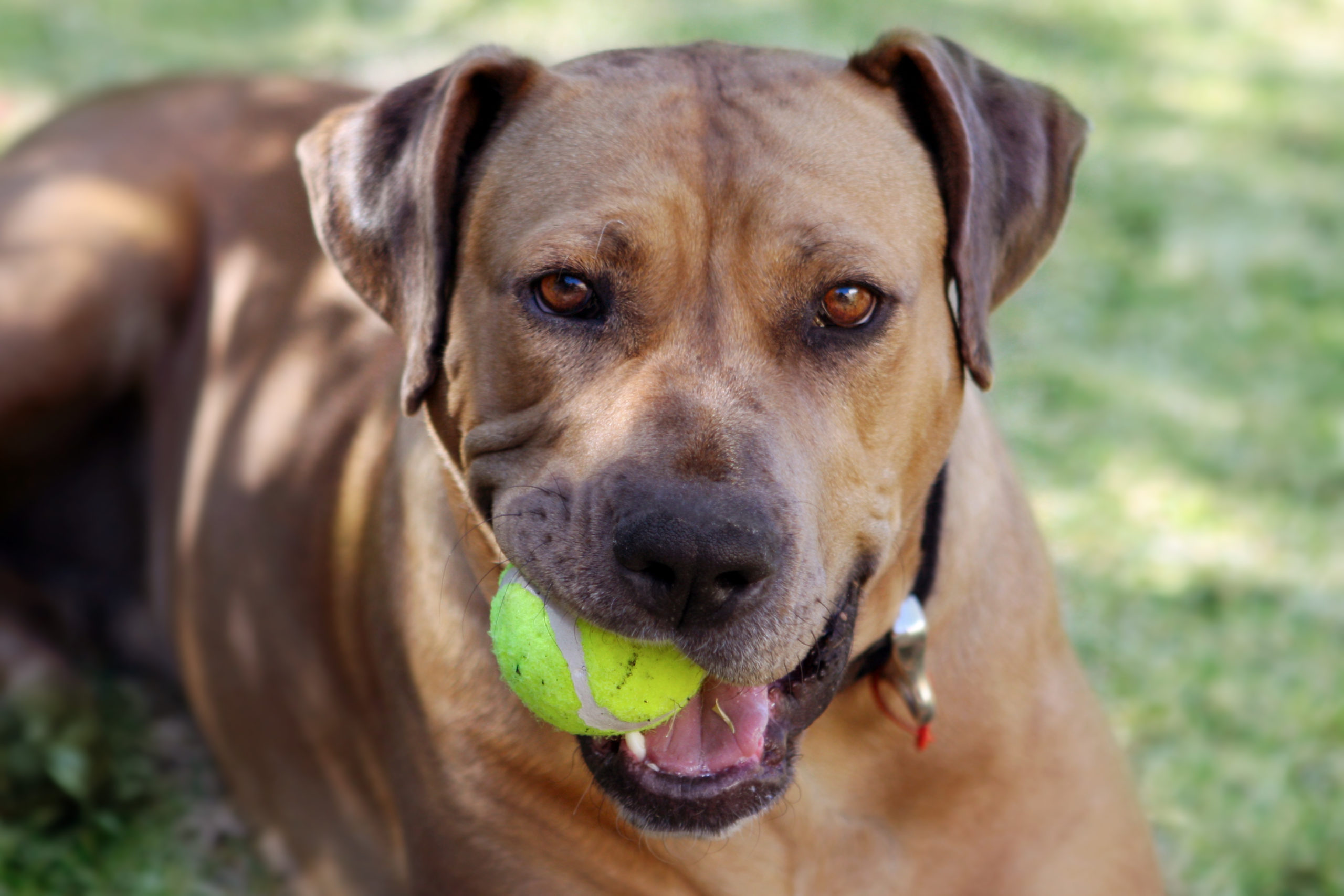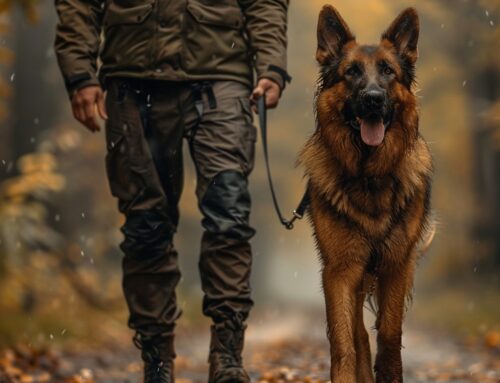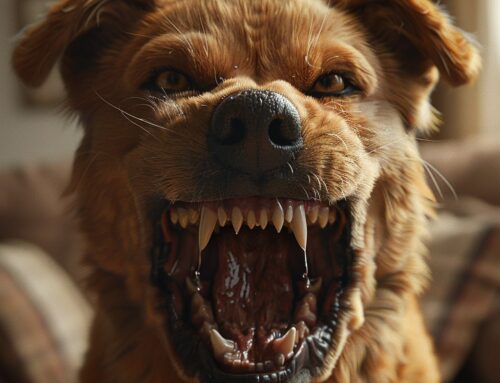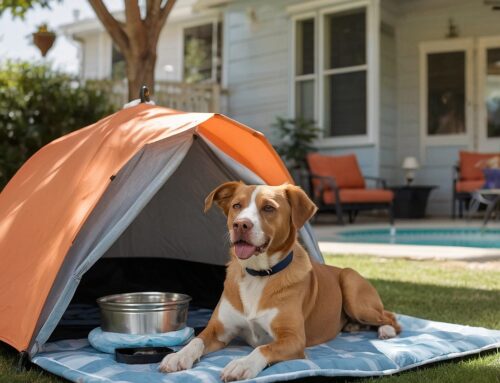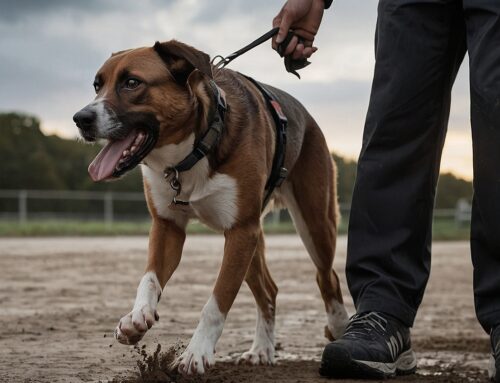Whether you’re an experienced dog owner or new to the canine world, you may not be aware of a dog behavior that’s particularly concerning, especially in homes where there are young children. That behavior is “resource guarding,” and it occurs when your dog reacts in a negative or even disturbing way if you try to take away their food, a toy or any other object your dog considers valuable (it can even occur if your dog perceives you or another human as a “resource” they need to defend). Your dog’s reactions in these cases may range from stiffening of their body to baring their teeth to growling, lunging or even biting.
Why Resource Guarding Needs to Be Curbed
Fortunately, this type of defensive behavior can be mitigated, given the proper training and for pet parents to follow the training protocol. Most dogs learn to guard resources when they’re young, and thus, this is the best age at which to wean them out of this habit. Resource guarding can worsen over time and become problematic if it’s not addressed early. But even if your dog is older, it’s still possible to modify their behavior if you take the proper approach.
Why Do Dogs Guard Resources?
Resource guarding is a learned behavior. It can often be traced back to the time when a dog was a tiny puppy and was competing with other pups in their litter for their mother’s nipples so they could receive nourishment. Later on, if they shared food dishes, there likely was also competition, and they may have had to shove their siblings out of the way to get enough to eat. The idea that someone or something might take away a valuable (or even critical) resource got implanted early, and for your dog, showing reactive behavior is a natural response to the possibility that their food, a treat, a bone or some other possession may be seized.
“Resource guarding comes in all shapes and sizes,” said David Greene, a San Diego dog trainer at Performance K9 Training. “It presents itself when dogs are pups and trying to compete with their littermates for food as early as in their whelping box. The goal in curbing this behavior is to teach your dog that your hand is something of value and not something that only takes things away.”
Taking the Right Approach
Some dog owners mistakenly believe that punishing or threatening their dog for this type of behavior is the right way to deal with it; this is not the ideal approach because it may make your dog’s reaction even worse if you do this. Modifying resource guarding behavior is something that has to be done incrementally over time; you’re not going to be able to eliminate it overnight.
Dog trainers have various methods when it comes to resource guarding. Here are a handful of ideas but it’s always recommended to work with a dog trainer who is experienced in this unwanted behavior. Also know that some additional maintenance training may be necessary in future years, as some dogs can’t help but regress naturally into this conduct.
Manage Your Dog’s Environment
One of the circumstances that triggers resource guarding is unpredictability. If your dog doesn’t know what to expect in his or her environment, resource guarding is a natural defense mechanism that he or she will often resort to. If you want to curb this behavior, the first step is to control the environment and make it both consistent and predictable as you’re training them, so there aren’t any surprises. Make sure that you’re the only person around, put all toys or other doggie possessions away, and don’t have empty food dishes out.
Also, consider the physical placement of the food or other objects your dog is guarding. Are these items in a part of your home that typically gets high traffic (or adjacent to an area that does)? Could your dog feel cornered, threatened or stressed by the mere location of these items? Try moving these objects around and gauging your dog’s behavior based on their different locations. Is it any different in one setting versus another? If you can lessen your dog’s resource guarding behavior with placement alone, that’s a great place to start.
Where Your Dog’s Distance Threshold?
In order to discover if and to what degree your dog guards resources, try safely approaching their food or other items they feel possessive over — slowly. At what distance can you start to see your dog becoming uncomfortable or defensive? When you can start to see the beginnings of guarding behaviors, such as those mentioned earlier, think of your distance as an invisible line that you just crossed.
Higher Value Treats
Because resource guarding is a learned behavior, your dog can also begin to view your (or another person’s) physical approach as a positive action, rather than a negative one at some point. One way to do this is by using high value treats. In other words, they are leaving what they are guarding to you because you are giving something better then what they have…. You are trading “up.”
When your dog is close to the resource that he or she is guarding, some professionals suggest approaching him or her slowly but keeping your distance before a reaction (the threshold you determined). With high value tasty treats in your hand, call your dog to you and see if they will come. If they do, reward them quickly with a treat. Also try to have them sit and engage them with more treats. This will teach them that coming to you has trumped the item they were resource guarding.
He or she will start to associate your approach with something positive, rather than something to be defensive about.
The Place Command
Obedience skills are paramount when it comes to dealing with resource guarding. The place command is a great skill when mitigating resource guarding. The place command can be a dog cot or dog bed in another part of the room or another room all together. This skill is when you call your dog to you and then send them to their place. They remain on their place despite whatever distractions are happening and look to you for guidance while remaining on their place.
While they are on their place and you have full control of your dog, you can then safely remove the item that was object of the resource guarding. For some pet parents, they may choose to send their dog from their place command to their crate to safely remove the object.
It’s all boils down to preference, and above all, safety.
Use Your Hands
You can train your dog to see your hands as implements that provide, rather than as tools that punish by taking away an object. When you take things away it increases a dog’s reactivity.
Again, high value treat are always a great connection with dogs. Hand feeding your dog is a great bonding experience, as well. When your dog starts to view your hand as one that gives it builds trust, focus and impulse control.
For Tough Cases, Call a Professional
If you don’t feel like you’re getting anywhere with the steps above, it may be appropriate to call a professional dog trainer. If you’re in San Diego, contact Performance K9 Training. If you’re not, try the American Kennel Club’s online AKC GoodDog Helpline.



